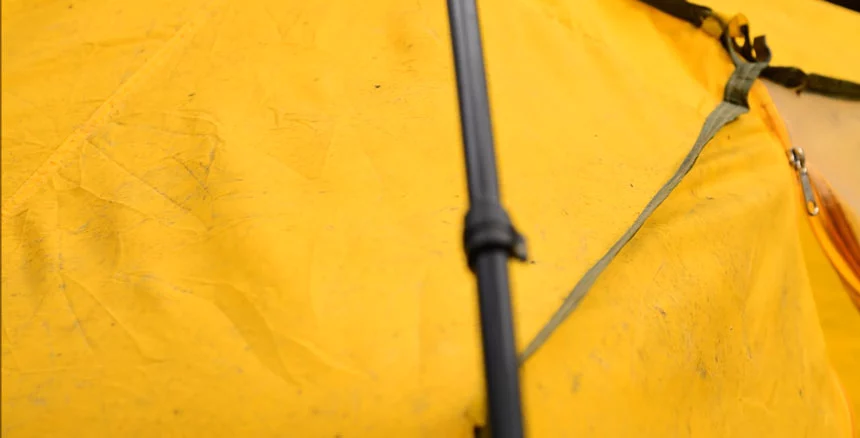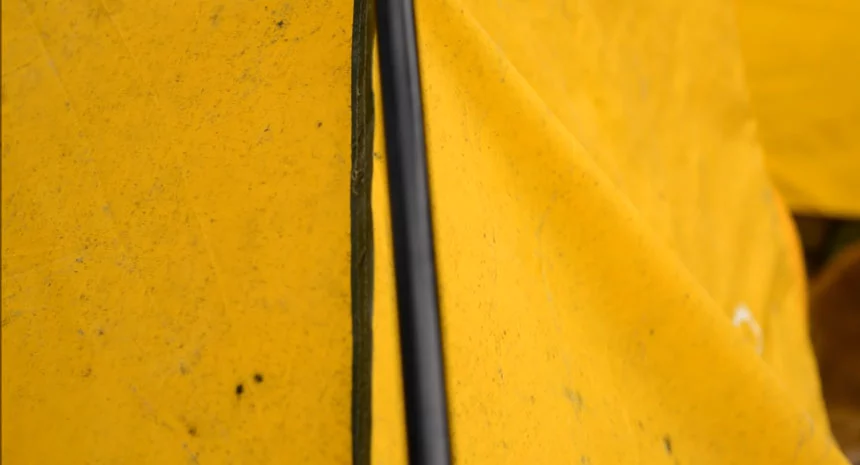Mold and mildew naturally develop on tents stored for long periods of time. These types of fungus will cling onto the material of your tent, even if it is made from a relatively impermeable fabric.
So you need to know how to clean a tent with mold properly so that it doesn’t affect your tent’s longevity in the long run.
While some molds can be removed manually, getting rid of stubborn mold requires more than just a simple wipe-down. It requires you to bring in a preventative measure while following a traditional method for tent cleaning.
With a regular tent care routine, it is possible to prevent building up foul odors and future mold growth to maintain healthy tents year-round.
Therefore, this article introduces some effective tips and advice on tent mold removal to ensure the best of your tent’s cleanliness.
Table of Contents
How to Clean Mold From a Tent
In case you forgot to dry your tent before packing it up after a five-day camping trip with friends and family in a forest, mold, and mildew can start to grow on the inside. It can stain your tent and cause odors. So it’s best to adopt the proper cleaning measures before the mold spores have a chance to grow out of control.

The following is an overview of some effective mold-cleaning techniques,
1. Use Soapy Warm Water
Soapy warm water has always worked the best when it comes to giving a quick wash to camping tents. You will not need to be hassling around with so much cleaning stuff and cleaner; it will just require you a large bowl full of lukewarm water, a bristle brush or sponge, and non-detergent soap.
The cleaning substance is easy to prepare as you will only have to prepare a mixture of soapy water and then dip the sponge or soft brush in it. While scrubbing your dirty tent material, you should gently press the soft sponge or brush to let it absorb excessive mildew substances from its surface.
Even if you clean your tent thoroughly with mild soap, a few mold spores might lurk in the seams. So, to ensure that your tent is completely clean and ready to use, be sure to rinse it off with a spray of clean water outside.
Also, leave your tent dry out after thorough cleansing. Keep it outside in the daylight. It should be placed in the shade and not under direct sunlight. That’s because sunshine can damage your tent and weaken the integrity of its fabric over time.
2. Try Vinegar Solution
Vinegar is a great way to address mold and mildew problems in your tent. Because vinegar can eliminate odors, as well as bleach stains, it’s one product you should have on hand at all times. It does a great job of cleaning many substances off of tents, like soap scum, sweaty smell, different types of fungus, and more.
Get a bucketful of warm water and add a cup of white vinegar to make the vinegar solution. Then soak your rag, sponge, or brush, and gently scrub away at the affected areas of your tent. Soon after you start scrubbing on the areas, you will notice a decrease in mold and mildew streaks.
You can also spray a diluted vinegar solution on the stains and let it sit for a few minutes. After you’re done, rinse it in cold water to wash off any residue or vinegar. Ensure you are not storing the wet tents right after the wash.
3. Lemon Juice and Salt Mixture
You can make a mold-repelling spray from salt and lemon juice. Add a cup of lemon juice into a gallon of hot water, then add a cup of salt, and mix it well to prepare the cleaning substance.
Be sure not to scrub harshly on the tent fabric as it might damage the waterproof coating. After you are done scrubbing, rinse with clean water and let it dry fully before putting your gear back inside.
This cleaner works best if there is no vinegar solution in your home. The smell of lemon is strong and acidic. Like vinegar solution, this cleaning substance also contains the same properties of odor eliminator that fight off the mildew smell and kill any bacteria lingering on your tent.
4. Get Tea Tree Oil and Warm Water Mixture
Tea tree oil is a natural mold and mildew killer, so it’s no surprise that it can also help you get your tent clean. As an essential oil, it has antimicrobial properties, making it perfect for disinfecting surfaces and making them smell fresh.
Tea tree oil is an effective, natural pesticide that kills fleas and their eggs. Simply get a spray bottle and add two teaspoons of tea tree oil along with the bottle full of water. Spray the mixture onto your tent’s affected areas. Let it sit for 15 minutes, then scrub the areas with a soft bristle brush or sponge to loosen the mildew. Lastly, rinse the clean tent with warm water.
After washing the tent, you can use a clean spray bottle to mist the inside of your tent with the tea tree oil and water solution. This will help to keep it smelling and looking crisp.
A few sprays of the tea tree oil and water mixture will be enough to freshen up the mildew odors of your tent after each trip.
5. Deep Cleaning Method
If your tent is still covered in mold after trying the aforementioned methods, it’s time to take more severe action. This will help you remove mold and mildew entirely so that you can store your tent fresh and continue camping without any worries.
One method that keeps your tent looking new is spot cleaning. If you notice a stain, spray it with a mixture of warm water and vinegar before scrubbing it with a bit of soap. You can also use MOLD ARMOR – Mold and Mildew Remover. Follow the instructions on the bottle to know how much cleaner to add.
Unzip the tent fly and any outside pockets while cleaning. Turn the tent inside into a tub or sink full of clean water to soak it in for 30 minutes. Rinse thoroughly. Spot clean with a brush or washcloth, if needed. You may have to do this several times until you’re satisfied that all the cleaner residues are gone. Let your tent air dry.
Don’t forget to dry your tent before storing it away fully. Some people like to pitch (not necessarily camp) their tents in a shady area after use, while others prefer to hang them up or even place them in the sun for drying. However, when you dry your tent, just make sure that you don’t leave it out overnight or any longer, as certain products may damage the coating on the fabric.
How to Remove Mildew From a Old Canvas Tent [Video]
The Bottom Line
Those who love camping or have a good experience in camping know how essential it is to maintain the cleanliness of tents. Cleanliness is a must not only for the health of your tent but also for its longevity which ensures your tent fabrics stay strong enough to prevent any severe wear and tear.
Removing mold and mildew from an outdoor tent isn’t a one-size-fits-all process. It depends on the type of tent, the severity of the issue, and your comfort level in how you clean it.
This article details the best techniques on how to clean a tent with mold to eliminate the hassle of traditional cleaning methods and ensures you get your tent back in tip-top shape in no time. So, it’s time you adopt these tactics and prepare your tent for your next adventure.



